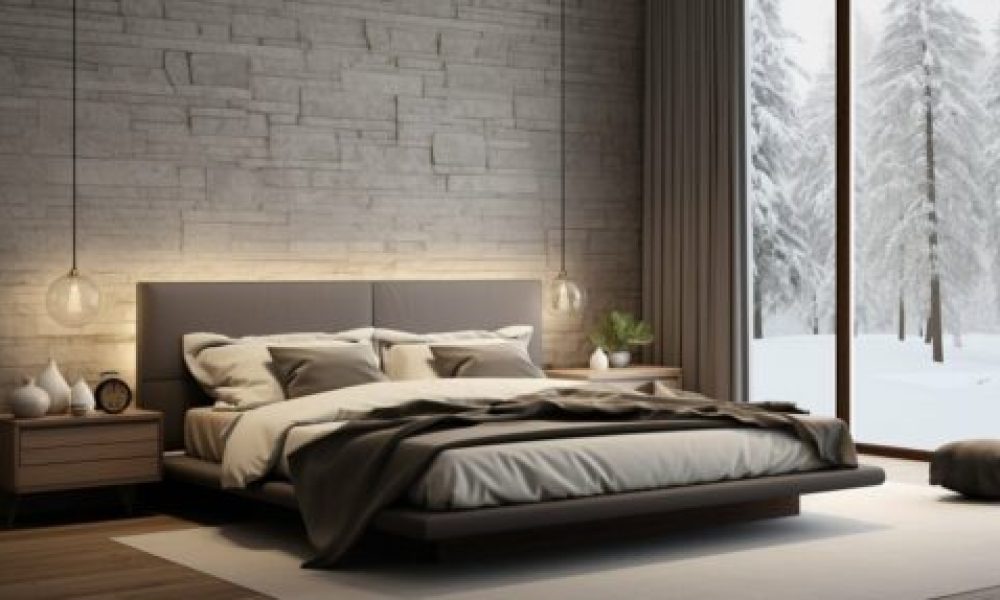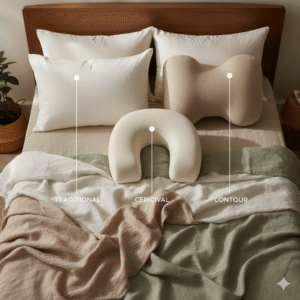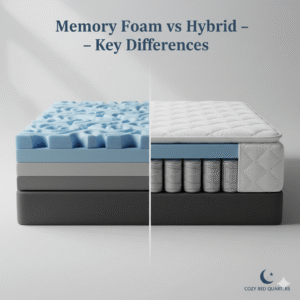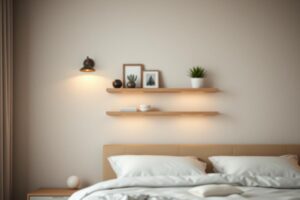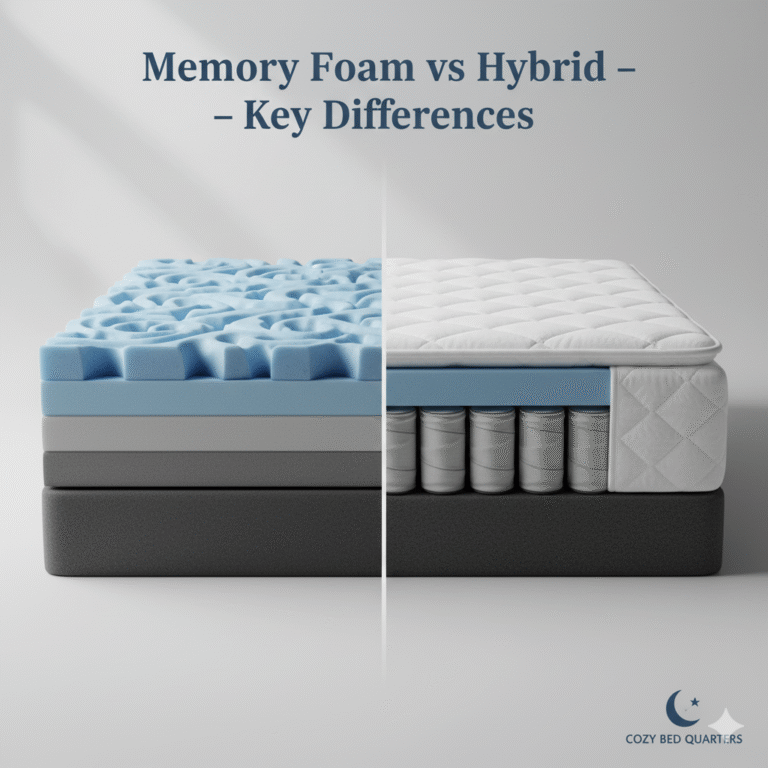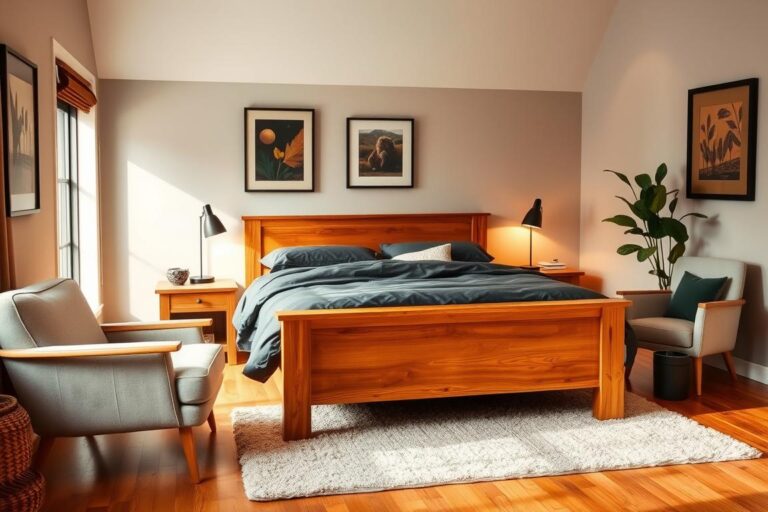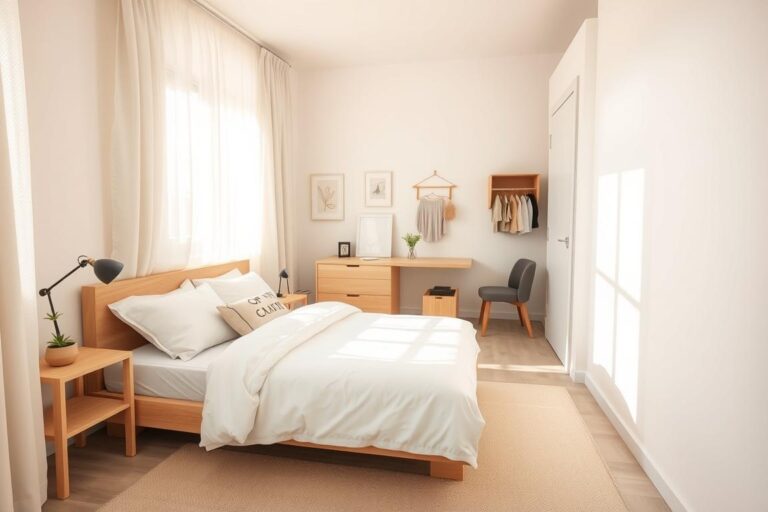Your bedroom should feel like a warm hug at the end of the day—a place where your mind and body can finally unwind. With a few thoughtful Feng Shui Bedroom Tips, you can transform your space into a cozy retreat that supports deep, peaceful sleep. From strategic bed placement to choosing the right colors and furniture layout, these time-tested principles can breathe new life—and energy—into your room.
Looking for more cozy design inspiration? Visit our Cozy Bed Quarters home guide.
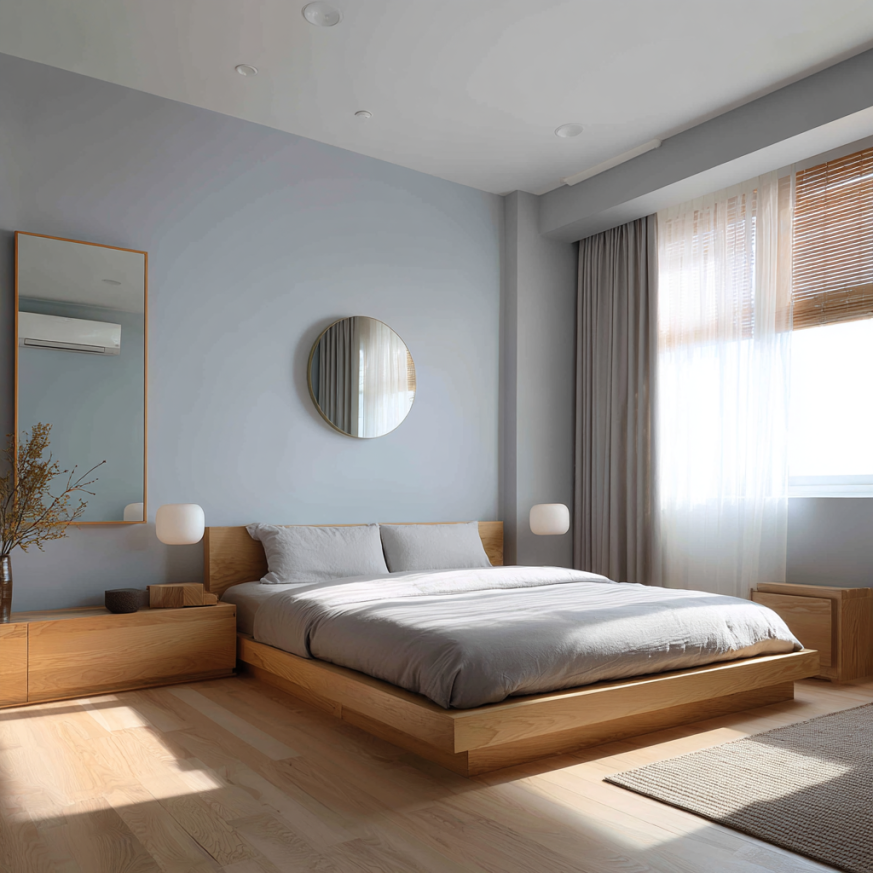
Key Takeaways
- Use Feng Shui principles to create a more restful and balanced bedroom atmosphere.
- Place your bed in a “commanding position” to feel protected and grounded in your space.
- Declutter, hide electronics, and reposition mirrors for a calm, distraction-free vibe.
- Choose soothing colors, rounded furniture, and personal artwork to enhance tranquility.
- Let chi flow freely with intentional decor and layout that feels both functional and serene.
What Is Feng Shui Bedroom Tips?
Feng Shui Bedroom Tips are practical applications of Feng Shui—the ancient Chinese practice of arranging your environment to promote harmony and positive energy. In the bedroom, that means making design and layout choices that encourage peaceful sleep, emotional balance, and physical rejuvenation.
Feng Shui isn’t just about aesthetics—it’s about intention. When we design with purpose, we invite healing energy, or chi, to move freely. This philosophy sees your bedroom as more than a sleeping space; it’s your energetic cocoon, where your body recharges and your subconscious resets.
According to The Spruce, even small changes in bed placement, color palette, or clutter levels can create a massive shift in how a room feels. If your bedroom has ever felt “off,” Feng Shui might be the missing piece.
In short: When your bedroom supports calm and comfort, your sleep and well-being naturally follow suit.

Top Benefits of Feng Shui Bedroom Tips
1. Better Sleep Quality
Sleep isn’t just about how many hours you get—it’s about how deeply you rest. Feng Shui encourages you to eliminate visual clutter, avoid overstimulation, and support your body’s natural rhythm. For example, removing electronics and minimizing harsh lighting can make it easier to fall asleep and stay asleep through the night.
When your bed faces a peaceful view and your decor is soft and intentional, your brain registers the space as safe and welcoming—essential for entering deeper stages of sleep.

2. Emotional and Energetic Balance
Your bedroom should be your sanctuary from the chaos of the outside world. By balancing elements like yin (restful energy) and yang (vibrant energy), you create a space that doesn’t overwhelm the senses. Rounded furniture, warm lighting, and personal touches—like joyful photos or cozy throws—nurture your emotional well-being.
Balance isn’t just visual—it’s energetic. When your space feels “off,” it can leave you emotionally off-center too. Feng Shui helps correct that misalignment gently and naturally.
In essence: Feng Shui bedrooms offer both sleep support and emotional nourishment in one peaceful package.
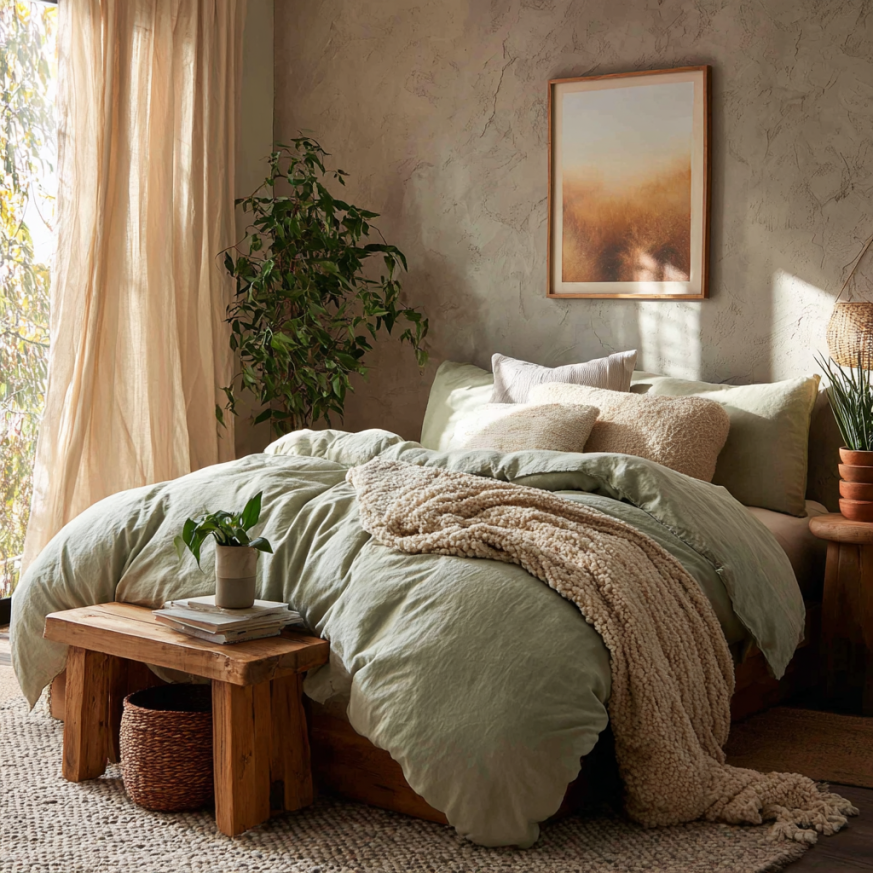
How to Choose the Right Feng Shui Bedroom Setup
- Position Your Bed Thoughtfully: The “commanding position” places your bed diagonally from the door, not directly in line with it. This allows you to see the entrance while maintaining a sense of privacy and protection.
- Honor the Headboard: Always place your bed against a solid wall with a supportive headboard. Avoid flimsy or open-backed designs—they don’t offer the energetic stability your body craves during rest.
- Soften the Color Palette: Choose muted hues like dusty blue, sage green, or warm beige to calm your nervous system. Avoid overly bright or bold tones, especially reds or neons.
- Clear the Clutter: Under-bed storage can block energy flow. Instead, opt for minimal, closed storage solutions. Keep surfaces clear to promote mental clarity and relaxation.
- Add Intention with Decor: Each item should feel like it belongs. Round nightstands, plush rugs, and peaceful artwork go a long way in making your room feel grounded and serene.
Want expert advice? Explore Architectural Digest’s guide to Feng Shui for sleep.
Bottom line: Feng Shui is about small, mindful decisions that add up to big improvements in how you feel every time you enter your bedroom.
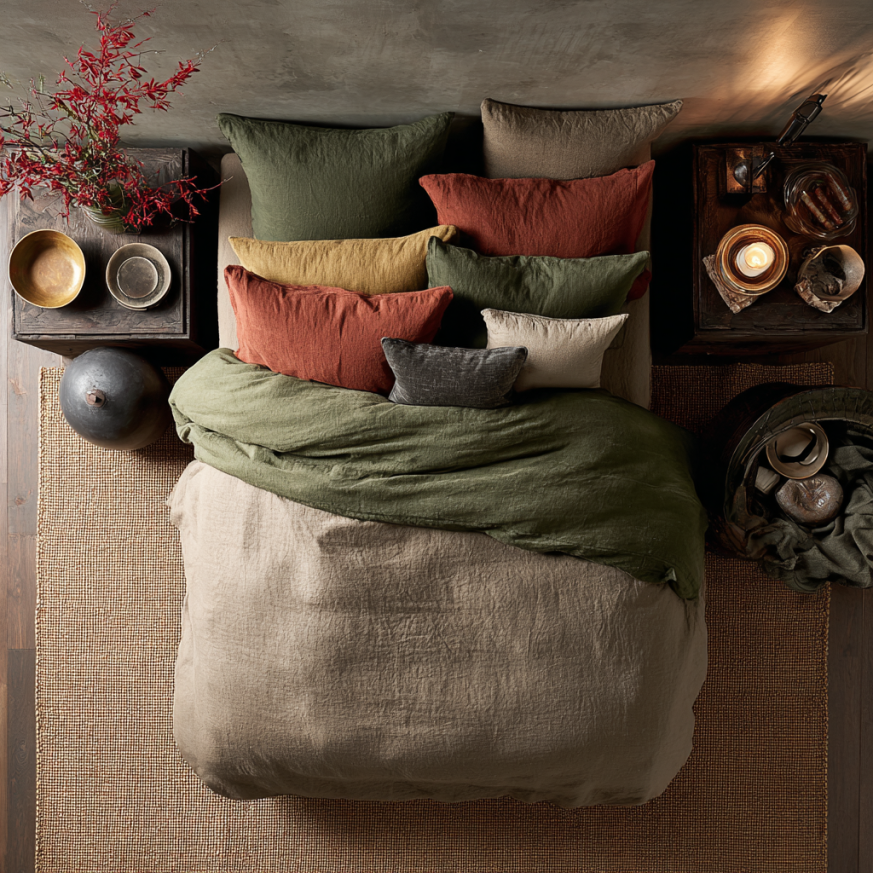
Best Options Compared
| Feature | Ideal Setup | Why It Works |
|---|---|---|
| Bed Placement | Diagonal from door | Creates a sense of safety and awareness without exposure |
| Headboard Support | Solid wall and padded headboard | Symbolizes stability and support in life and relationships |
| Color Scheme | Earth tones, pastels, soft neutrals | Reduces stimulation and encourages restfulness |
TL;DR: The most restful bedrooms have balance, intention, and natural flow—just like nature itself.
Quick Answer
Feng Shui Bedroom Tips focus on optimizing bed placement, decluttering, lighting, and intentional decor to support restful sleep and balanced energy. These subtle shifts can create a massive difference in how you sleep, feel, and function day to day.
By following these Feng Shui Bedroom Tips, you’re not just decorating—you’re designing a deeply personal space where your body, mind, and spirit feel supported every single night. It’s your sacred retreat—crafted with care, intention, and a whole lot of heart.
FAQ
- What is the best bed position for Feng Shui?
- Place your bed so you can see the door while lying down, but not be directly in line with it. The best setup has the bed anchored against a solid wall and not sharing a wall with a bathroom.
- Can mirrors affect sleep in Feng Shui?
- Yes, mirrors that reflect the bed can bounce energy and create restlessness. It’s best to avoid them in direct line of sight from the bed, or cover them with fabric at night.
- What colors are best for a Feng Shui bedroom?
- Go for gentle, nurturing hues like pale green, sky blue, soft pink, or warm beige. These tones promote relaxation and harmony, making it easier to unwind.
- Should I keep electronics out of the bedroom?
- Absolutely. TVs, phones, and other devices give off energetic “noise” that disturbs your rest. Store them away or create a no-tech zone after a certain hour.
- Decorilla’s Feng Shui bedroom guide
- The Spruce – Feng Shui bed placement
- WikiHow on Feng Shui your bedroom
Want more cozy tips and inspiration? Subscribe to our Cozy Living Newsletter for exclusive updates!

